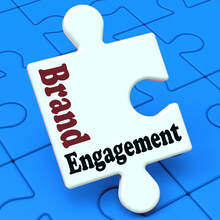The term special sales is commonly used to describe sales opportunities outside of bookstores. Also referred to as non-bookstore (or non-traditional) marketing, it can be a profitable source of new revenue.
The best way to exploit this opportunity is to divide it into two segments and sell to buyers in each. One is the retail segment where you reach buyers using a network of middlemen. The other segment is comprised of direct sales to non-retailers that use books as marketing tools to sell more of their products or help their employees, members, or students. This week we will cover retailers and next week I will come back and share with you some ideas for selling to non-retailers. Enjoy!
Selling to Retailers
You are already familiar with this sector. You find distributors or wholesalers to get your books into retail outlets where they are sold off the shelf to consumers. Payments are made in two or three months and unsold books are returned. Retailers display products that 1) will build store traffic, 2) maximize profitability per square foot and 3) generate more inventory turns. Prove that your title can do those things better than competitors’ titles and you can get your books on the shelves of the below retailers:
Discount stores and warehouse clubs. Stores in this category include Walmart, Target, Costco, and Sam's Club. Books at these stores are discounted heavily and do not offer the same margins of some larger-ticket products. Therefore, these retailers limit shelf space to the “brand-name” authors and top-selling books.
Airport stores. Books on management, investment, economics, business biography, personal finance, and health sell well among business travelers. Books for children also tend to do well in these outlets, especially children’s “activity books.” Popular fiction achieves book sales in this environment also. Consider selling to other airport stores, not just bookstores.
Supermarkets and pharmacies. Cookbooks, travel books, and regional titles move in supermarkets, but health-related topics sell better in drugstores. Children’s titles also seem to do well in supermarkets, but fiction remains the mainstay there.
Museums, zoos and national parks. Most of these have a gift shop, and to get in them you must demonstrate how your books can educate and entertain their guests. Get your books on these shelves using third-party management firms that acquire books for the gift shops. Event Network operates gift shops at zoos, museums, aquariums, science centers and botanical gardens, and Eastern National serves the national park system.
Gift shops. This category includes large chains such as Pottery Barn, Yankee Candle, Bath and Body Works, Pier One and Crate & Barrel, Hallmark Stores and Spencer Gifts. It also includes hotel and hospital gift shops. Reach these outlets through direct marketing, sales-representative groups, and by attending trade shows and gift marts.
Specialty stores. You could achieve book sales by selling your books in home-improvement centers, pet shops, auto-supply stores, camera shops, toy stores or business-supply stores—retailers that serve identifiable groups of people with a common interest in your content.
Try it. They just might buy it…
To Your Success,
MG





 RSS Feed
RSS Feed
